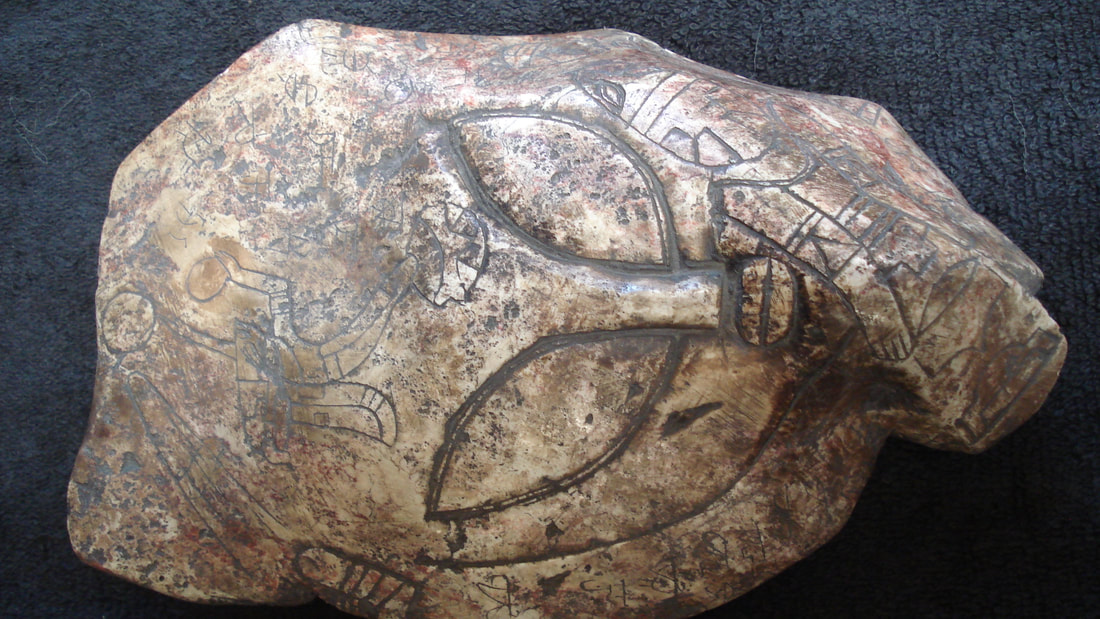

Meerschaum processing has a history of approximately 5 thousand years. The in-situ findings in Çavlum Middle Bronze Age Cemetery, where the stamp seal is found, also contribute to the emergence of new ideas on the Middle Bronze Age burial customs and to illuminate the problems related to the period. It is possible that the line on the printing surface caused a fracture on the edge of the printing surface during production, resulting in no other traces on the seal, or that the seal was not fully finished. The imprinted face seal is 2.3 cm in length. The stamp seal, which is a significant source of knowledge about the history of meerschaum usage, features a handle (diameter: 0.9 cm.) and a 1.6 cm. The reason is believed to be because the seal was placed as a dead gift before it was completed. It is seen that there is only one line on the printing surface of the dead gift stamp seal, which was placed in a stone cist dating to the Middle Bronze Age (18th century BC). The stamp seal was found in the grave of an 8-year-old boy among 73 graves unearthed during the salvage excavations. Çavlum stamp seal, the oldest meerschaum workĭuring the salvage, excavations were carried out between 1999-2001 in Çavlum Village on the Alpu Plain, 16 kilometers east of Eskişehir province, the oldest processed meerschaum a stamp seal was found. Meerschaum, which is used in making ornaments and pipes due to its light, soft and non-flammable properties, is mined in Eskişehir in Turkey.Įven though meerschaum is mined in a few countries in the world, most of the commercially workable deposits are located in Eskişehir.

Presumably more categories were planned before the release of NEXT, but scrapped and these were combined into one. Delicate Flora consist of two separate categories (with FARM and PLNT denotations as per the extracted MBIN file).The modifier and value ranges are extracted from the 1.77 version of PROCEDURALPRODUCTTABLE.MBIN game file.Note: The specified base value ranges of all types are multiplied by 1.15, this total value is indicated on the information panel of each artifact. There is no correlation between the modifier and the value, both are randomly chosen within their ranges. The table shows the modifier and value ranges for each artifact type. Note: This table is incomplete, please help expanding it. The three primary sources are Large Artifact Crates, missions from the Mission Board, and Frigate expeditions. The table shows the possible sources for each artifact type.
#OLDEST ARTIFACT ARCHIVE#
The Artifact Exchange Vault can be used at Colossal Archive buildings to exchange blue (uncommon) artifacts for purple or yellow (rare) artifacts of greater value. The Artifact Research project welcomes any discovery to be documented. They have no additional purpose beside selling them at Galactic Trade Terminals or to NPCs. Artifacts aka Relics are procedurally generated products that can be received from various activities throughout the gameplay.


 0 kommentar(er)
0 kommentar(er)
